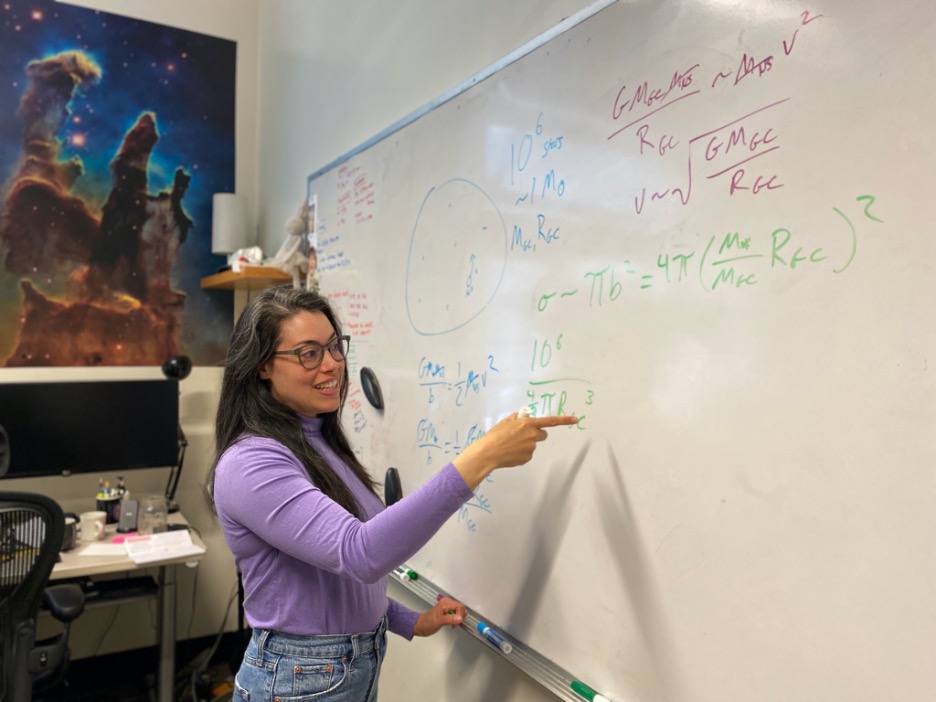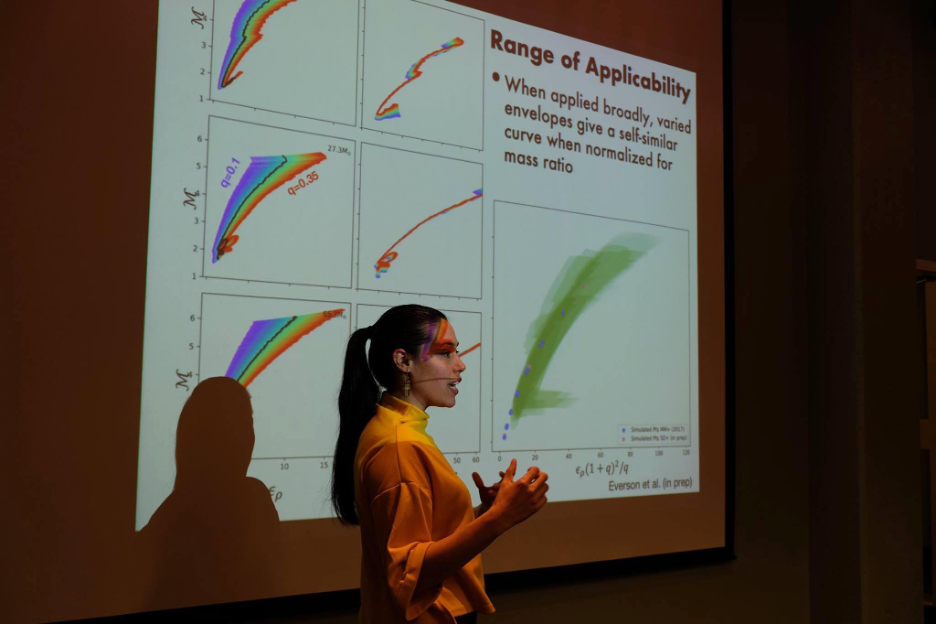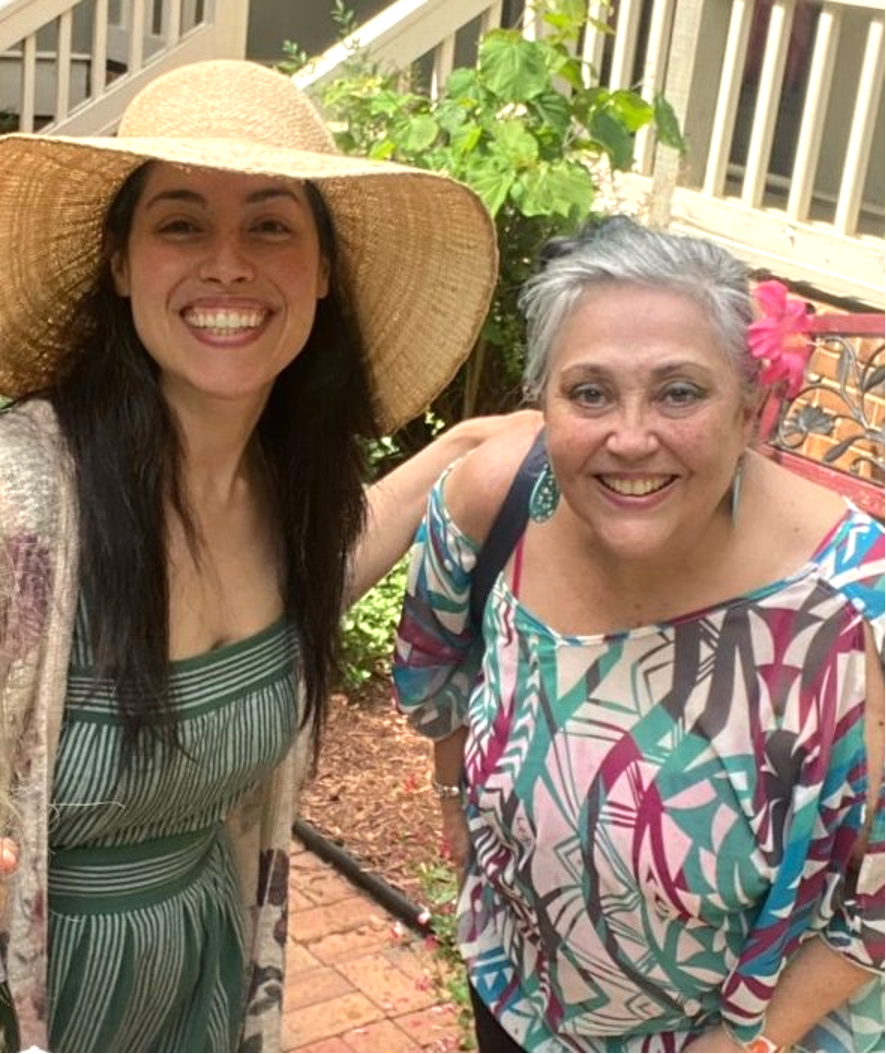In celebration of #HispanicHeritageMonth, we’re spotlighting UC students of Latino/a/x descent making an impact in academia, their communities, and the world.

Rosa Wallace Everson is a Ph.D. candidate and NSF Graduate Fellow in the Department of Astronomy & Astrophysics at the University of California, Santa Cruz with a focus on high-energy astrophysics and fluid dynamics, specifically in binaries undergoing common envelope evolution 🤯. Rosa is also a mentor and advisory board member of the Lamat Institute, a program founded by celebrated astrophysicist and UC Santa Cruz professor Enrico Ramirez-Ruiz to support students from nontraditional backgrounds, historically marginalized communities, and community colleges seeking research opportunities on their path toward graduate school in STEM.
Q: What brought you to astrophysics and UC Santa Cruz?
A: I’ve always been curious about the universe and our place in it, but I spent about a decade as a performing artist (exploring those questions in a different way) before I decided to get off the road and pursue physics as more than a hobby. I was initially interested in theoretical particle physics, but I was drawn to astrophysics as the only discipline that encompasses every subfield of physics, which was an exciting challenge. I ultimately came to UC Santa Cruz because of the people: the community within the Astro department here is one of a kind, and I couldn’t see myself doing grad school anywhere else.
Q: What are you working on that you are most excited about?
A: My research focuses on some of the most extreme objects in the universe, namely black holes or neutron stars, and their interactions with companion stars. When these interactions occur, the star often gets pulled apart in a fantastic light show and can lead to the formation of really interesting configurations, like double neutron stars, black hole-neutron star binaries, etc. I’m most interested in how the structure of the companion star impacts the interaction. Right now, I’m very excited about a project in which we’re exploring what happens when a neutron star merges with the core of its stellar companion. What we learned defied our expectations!

Q: How does your Hispanic heritage and culture play a role in your academic and professional life?
A: Growing up in a household where education and hard work were highly valued, I was deeply influenced by my mother and grandmother, who was nicaragüense. My mother was the first person in our family to earn a Ph.D., and the challenges she faced as a Latina in STEM made me acutely aware of representation issues, bias, and the invisible labor of underrepresented academics. However, this awareness fueled my own commitment to succeed, first of all, but also to break down systemic barriers and promote diversity in the fields of physics and astrophysics. Initiating and supporting DEIB efforts have been a huge part of my journey, even when I was an undergrad. Being involved with the Lamat program at UC Santa Cruz has been a beautiful expression of my values in action, and has allowed me to envision the kind of contribution I’d like to make at later stages in my career. Self-expression, independence, and celebration were also prized in my family, which helped give me the courage to show up as myself in a field where there aren’t too many people like me, but also to see the value of different perspectives coming together to solve complex problems, and the importance of having fun! My Hispanic heritage and culture has been a source of strength and inspiration. I feel it has definitely made me a better student, mentor, and scientist.

Q: Why do you enjoy being a mentor for young people interested in STEM careers?
A: Paying it forward is really one of my core values. I’ve been extremely fortunate in my academic journey, but there were definitely unnecessary challenges, too, and there’s no reason others need to struggle just because I did. Mentoring junior researchers and students in STEM allows me to give back to the community, to support students at crucial junctures in their academic journey, and provide critical information about navigating the system of academia so that they can thrive and devote their energy to the tasks that will propel them forward. I also simply love collaborating anyway, so the relationship is a mutually beneficial one! I might be mentoring them, but I’m learning, too.
